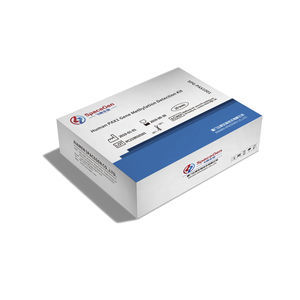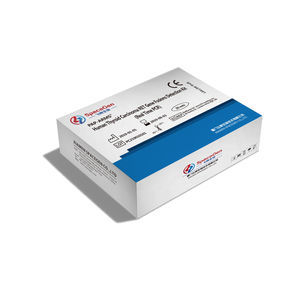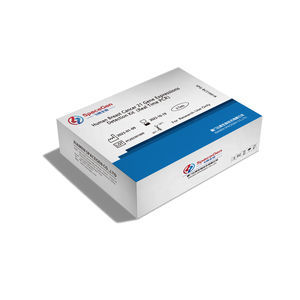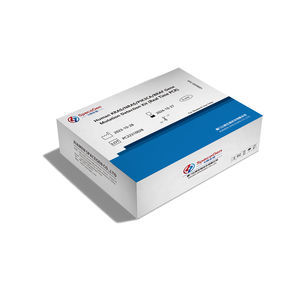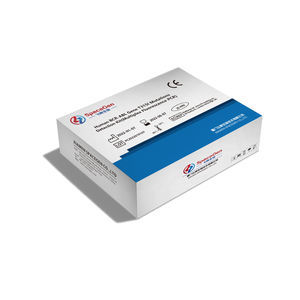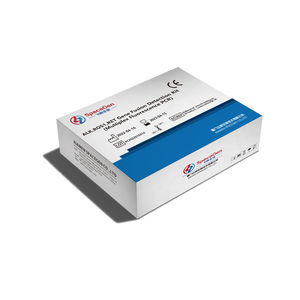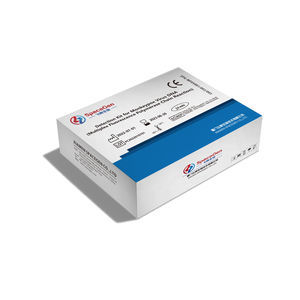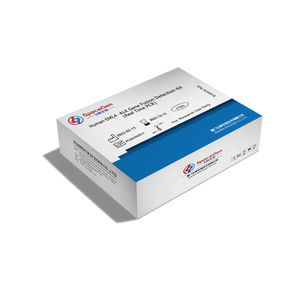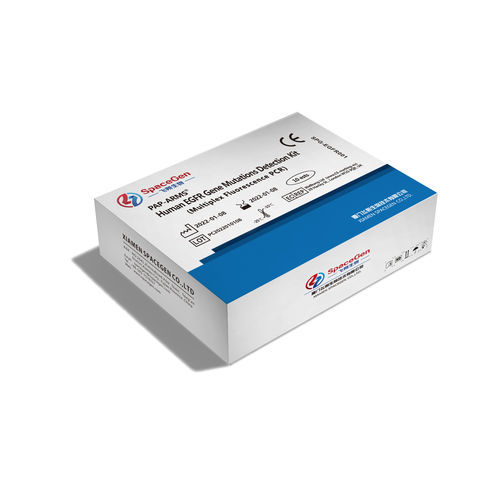

- Company
- Products
- Catalogs
- News & Trends
- Exhibitions
Oncology detection kit PC2022010108EGFR geneclinicaltissue
Add to favorites
Compare this product
Characteristics
- Application field
- oncology
- Tested parameter
- EGFR gene
- Sample type
- clinical, tissue
- Analysis mode
- molecular
- Result display time
90 min
Description
Epidermal growth factor receptor (EGFR) is a receptor tyrosine kinase, expressed in 50% of non-small cell lung cancer (NSCLC) [1], which is closely related to the occurrence and development of tumors. EGFR is the most frequently mutated driver gene in NSCLC patients in East Asian population, with a mutation frequency of 38.4%, among which East Asian female NSCLC patients have a mutation frequency of 51.1% [2]. EGFR gene mutation is the most important predictor of the efficacy of EGFR Tyrosine Kinase Inhibitor (TKI) and is a prerequisite for clinically determining whether patients can use EGFR-TKI therapy. Both the National Comprehensive Cancer Network (NCCN) and the Chinese Society of Clinical Oncology (CSCO) guidelines include EGFR mutation detection as a category 1 recommendation [3][4].
COMMON MUTATIONS
The carcinogenic mutations of EGFR mostly occur in exons 18-21, of which 19 del and L858R account for 85% to 90% of EGFR mutations [1] which are also the most common EGFR-TKI sensitive mutations. The T790M mutation suggests resistance to the first and second generation of EGFR-TKI while sensitive to the third generation of EGFR-TKI. For 20 ins mutation,which is not sensitive to traditional EGFR-TKI, suggesting the use of EGFR 20 ins inhibitor.
DETECTION SIGNIFICANCE
1. EGFR mutation detection in resectable stage IB-IIIA NSCLC patients to guide adjuvant targeted therapy.
2. The detection of EGFR mutation for unresectable stage III and IV NSCLC patients, can help guide the treatments according to molecular classification.
3. For patients with EGFR-TKI resistance, it is recommended to perform another biopsy for EGFR gene mutation detection.
Catalogs
No catalogs are available for this product.
See all of SPACEGEN‘s catalogsRelated Searches
- Assay kit
- Blood assay kit
- Immunoassay assay kit
- Plasma assay kit
- Infectious disease detection kit
- Analysis software
- Molecular test kit
- Respiratory infection test kit
- Whole blood detection kit
- Optical assay kit
- Clinical assay kit
- Fluorescence assay kit
- Viewer software
- Real-time PCR test kit
- Research assay kit
- Laboratory software
- Windows software
- Laboratory detection kit
- Cell assay kit
- Oncology test kit
*Prices are pre-tax. They exclude delivery charges and customs duties and do not include additional charges for installation or activation options. Prices are indicative only and may vary by country, with changes to the cost of raw materials and exchange rates.


